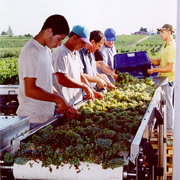Social get-togethers, urban vineyards, provocative packaging. Throughout the world, wineries are searching for ways to promote their brands in a global marketplace saturated by thousands of competitors – a market in which quality has ceased to be a differentiator, and where changes in consumer habits are putting conventional strategies in doubt. Experts from throughout the world shared their experiences at the Sixth Global Wine Forum at the end of April. The meeting took place in La Rioja, the Spanish location that is the best-known, officially recognized Spanish “wine place and origin” outside the country’s borders.

Sign up to stay informed about our latest article releases.